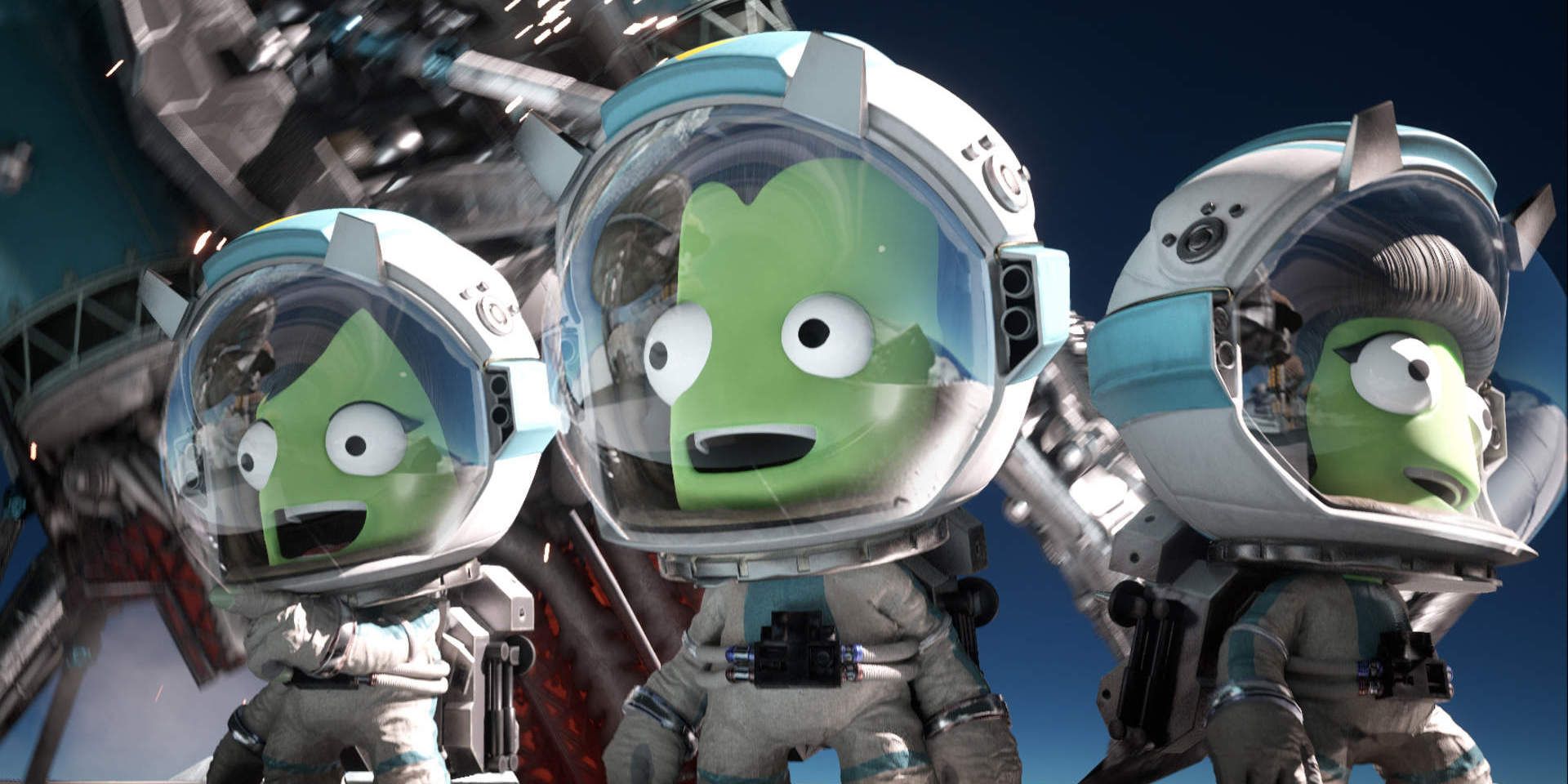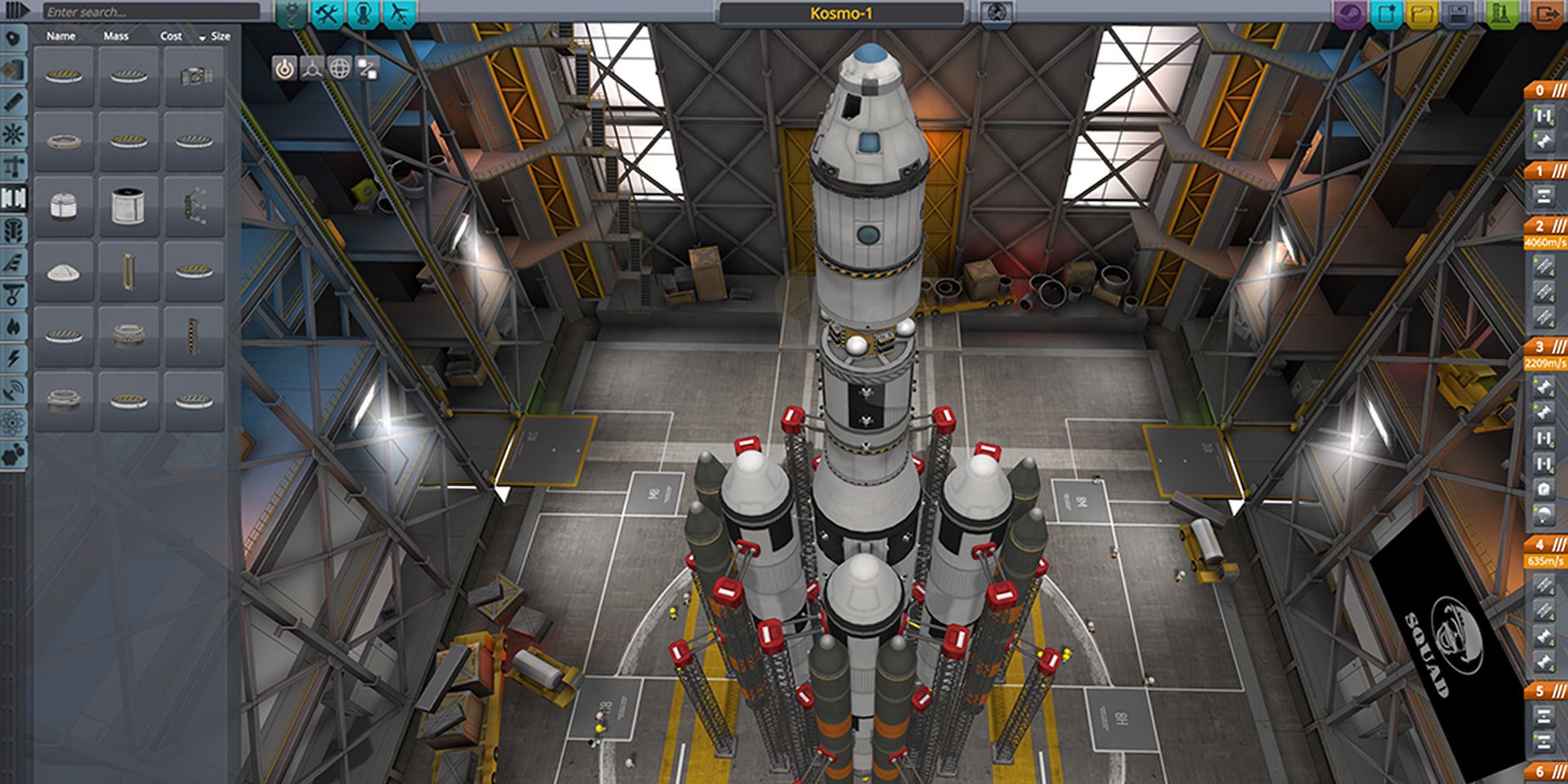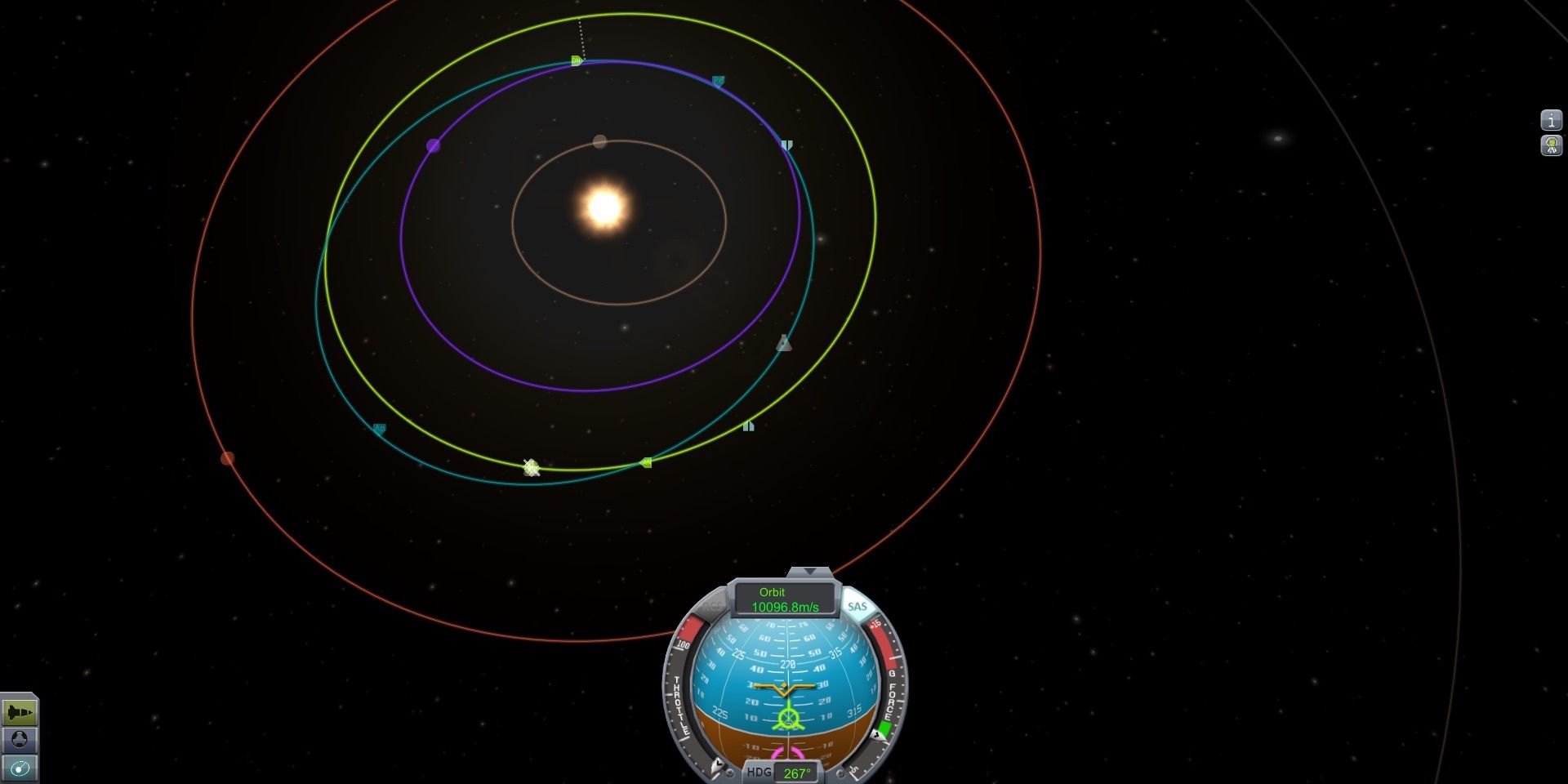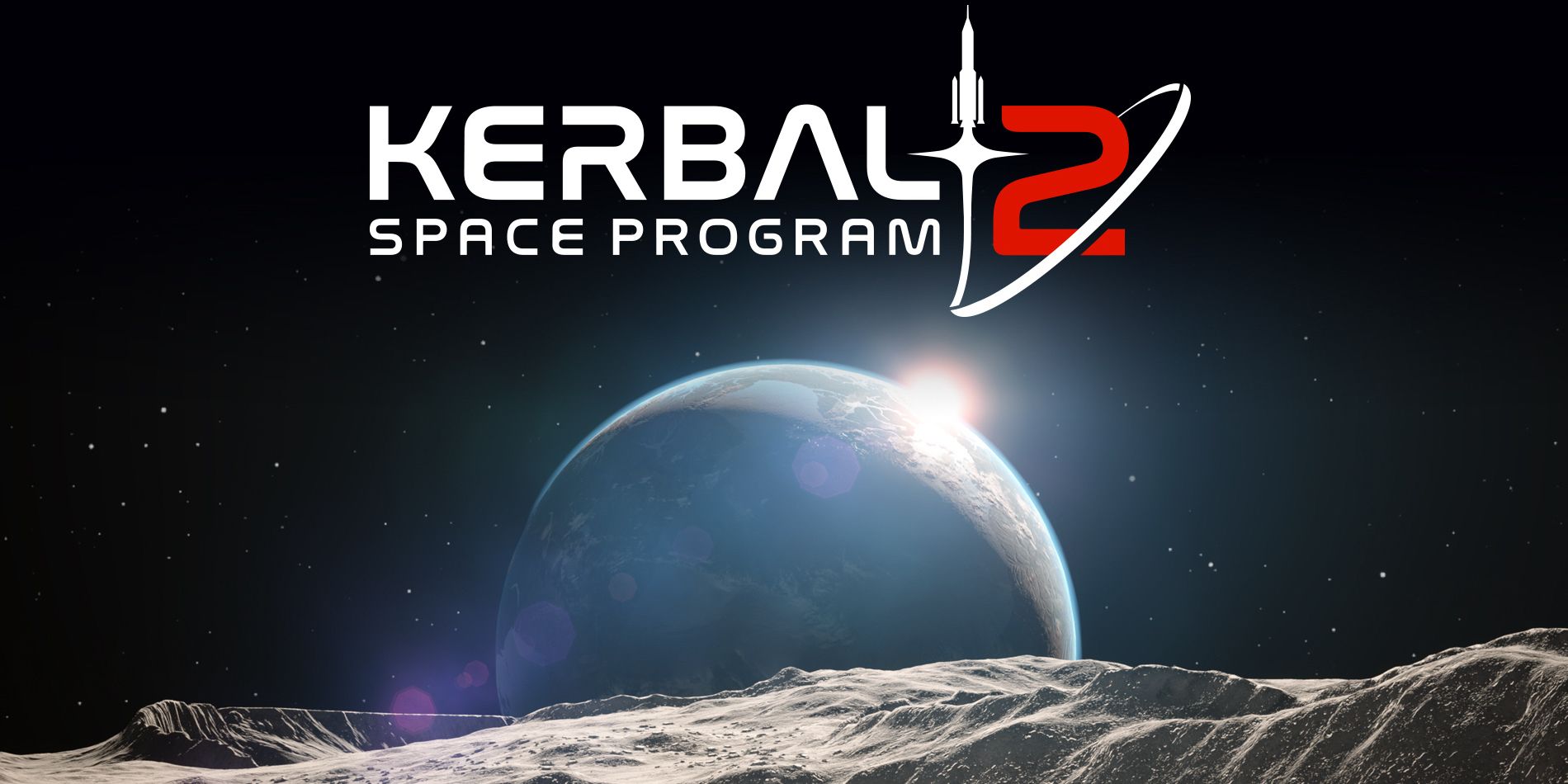The space simulator game Kerbal Space Program 2 can teach players real astronaut skills. To understand the principles behind rocket science and real-world space travel, players can spend years at university studying physics and engineering... or they can play games like the Kerbal Space Program simulator series, whose latest title, explains the principles of building and steering rockets with intuitive controls, tutorials, and a zany, slap-stick setting.
The premiere trailer for Kerbal Space Program 2 perfectly captures what this best-selling space simulator franchise is all about. The first images are of spacecrafts drifting through the void of space in a silent ballet, priming viewers to expect a space odyssey in the vein of Apollo 13, Interstellar, The Martian, or Ad Astra. Then they meet the Kerbals, the little green alien heroes of the game: brash, clumsy, over-enthusiastic astronauts who somehow manage to survive a ludicrous number of crash-landings, mishaps, and orbital collisions throughout the trailer.
This mix of themes – serious space exploration and slapstick disaster comedy – is key to the Kerbal Space Program franchise's success, creating a lighthearted environment where players can design their own spacecraft, laugh at their own mistakes, and gradually learn real-life rocket science.
Kerbal Space Program's Gameplay
The first Kerbal Space Program, developed from an early access beta back in 2011 and fully released in 2015, is in some ways a management simulator in the tradition of SimCity and Rollercoaster Tycoon. Players are put in charge of a newly founded space program on the planet Kerbin, a world suspiciously similar to Earth, but inhabited by the tiny Minion-like Kerbals. In campaign and sandbox modes, players slowly build up their space program, unlock new spaceship parts, and embark on missions of increasing complexity – a suborbital flight, an orbital flight, a trip to the moon, and grander missions to other planets.
Kerbal Space Program: It's Exactly Rocket Science
Real-life rocket science is hard, and Kerbal Space Program doesn't shy away from that. Unlike the airplane-styled space flight of games like Elite: Dangerous and No Man's Sky, Kerbal Space Program uses a Newtonian physics system to simulate all the complex maneuvers of real-world spaceflight – orbital rendezvouses, moon landings, atmospheric re-entry, and so on. Starting players will invariably crash their rockets the first few times, but then they slowly start to grasp the logic of space travel, designing sturdier rockets and plotting elegant maneuvers through space.
The base Kerbal Space Program uses a built-in orbital plotting system that let players learn rocket science without needing to memorize notebooks full of equations. For physics students and classrooms who do want to learn the equations, the KerbalEdu educational spin-off includes a series of built-in physics lessons and flight calculators, coupled with blueprints for real-life rockets like the V-2 and the Saturn 5.
Kerbal Space Program 2: The New Frontier
According to developers, Kerbal Space Program 2 will preserve the iconic formula of Kerbal Space Program 1 while adding a swathe of new features to expand gameplay and improve accessibility. A refined user interface and clearer tutorials will make the rocket science of the game easier for new players to pick up, while veteran players of KSP 1 will now be able to build off-world colonies, harvest outer space asteroids, and construct giant interstellar vessels that can travel to other stars. Clips of footage from the recent Kerbal Space Program 2 cinematic trailer also hint at interesting new rocket parts players will be able to tinker with: fusion drives ignited by rings of lasers, spinning space-station wheels, and even nuclear pulse rockets propelled by a barrage of detonating atomic bombs.
If there's a moral or message to the Kerbal Space Program series, it's that people learn a lot by embracing their mistakes. For all the comic exaggeration of KSP, real-life spaceflight is just as complicated and just as easy to mess up. Actual rocket accidents can risk both lives and livelihoods, but in the cartoonish simulation of Kerbal Space Program players are free to experiment and take risks, learning from wild failures and wild successes alike to better understand how humanity can reach for the stars.
Source: Kerbal Space Program




